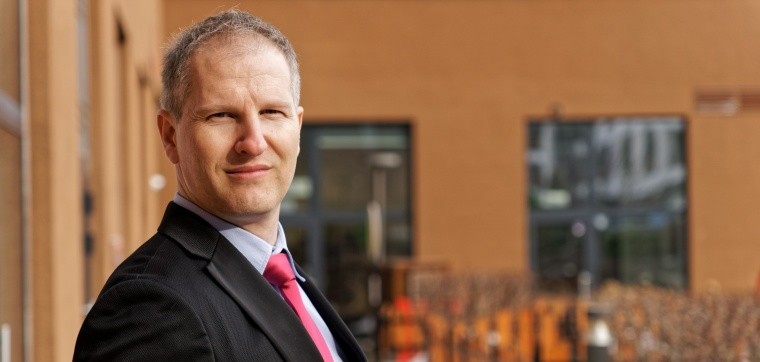Since October 2022 Softline has been operating under the brand name Noventiq.
The IT sector has undoubtedly played a key role in 2021, which has also had an impact on Softline’s Central and Eastern European operations. Zoltán Mészáros, Vice President for the CEE region, gives an overview of the busy year and outlines the company’s plans for 2022.
What has the last year been like for Softline in the region?
The pandemic has undeniably left its mark on 2021. Unlike many sectors, however, IT is in a special position, as it has represented a way out in terms of adapting to the changed circumstances. For us, this meant an opportunity and growth potential, but also a huge responsibility, as we had to support the secure day-to-day operations of our customers. And we’ve been able to do this with a constantly expanding team, which has proved to be a constant challenge within the uncertainty of the current labor market.
How did the company perform in the region in 2021?
Thanks to careful planning and firm decisions, we’ve strengthened our company’s presence in many areas. We’ve redesigned and expanded our service portfolio, and we’re also relying more actively on solutions from our world-class competence centers in the region. These have resulted in a dynamic and fruitful year for us. Our turnover increased by 70% year-on-year, well exceeding expectations. This was accompanied by a 50% increase in profit, while our headcount grew by 30%.
In addition to our steady growth, there are two things from last year that I’m very proud of. Our Bulgarian subsidiary received Microsoft’s Country Partner of the Year award, which recognizes companies that are outstandingly successful and innovative. This is a huge achievement for Softline Bulgaria, considering that the company is only three years old. On the other hand, in addition to the private sector, we’ve also been able to serve the public sector to a greater extent in the region, supporting their operations with a wide range of services. This has allowed us to grow our market share and further strengthen our dominant position in the industry.
How have customer needs changed in the region?
In the first half of the year, companies were working to stabilize their operations, which partly culminated in greater demand for hardware. This has also forced companies to choose between building their own infrastructure or using a cloud-based infrastructure. Overall, we can see that hardware supply problems turned the tide in favor of cloud services. The shift to cloud services has also increased the importance of consulting and support services, which are aimed at ensuring a seamless transition.
We can also say that, in addition to face-to-face meetings, people accept remote online services in the long term as well. In our case, this paradigm shift has also resulted in the strong involvement of our international competence centers. By undertaking projects online, we can use our international resources more actively, and provide more cost-effective, practical solutions to our clients.
Will the developments made in response to the pandemic remain part of companies’ lives?
In the long term, hybrid cloud solutions, that enable working both from home and at the workplace, are here to stay. Moreover, it’s expected that the software introduced during this period will be more fully exploited, and people will get to know more of their features. In terms of digital transformation, this period has clearly been a catalyst in the life of companies. And the knowledge they gained and the tools they implemented during this process will be integrated into their operations in the long run. Even so, the role of the triad of communication, collaboration, and security will stay unchallenged. Ongoing investment in these is essential for operating efficiently and securely, whether in physical or cloud-based environments.
Which areas are worth focusing on in 2022?
Traditional on-premise infrastructures are becoming obsolete, which provides an opportunity to optimize them in terms of performance, availability and cost. Based on this, we expect a strong shift towards on-demand computing, storage and networking resources using a pay-per-use model. At the same time, managed services, where external specialists are responsible for the optimal functioning of the infrastructure and the applications running on it, will become stronger.
In addition to this, there’s a growing need to modernize applications, by replacing on-premise solutions with native cloud applications where appropriate. The current trends will continue, and more and more companies will put automating processes on their 2022 agenda, with a focus on low-code/no-code platforms.
What are the company’s objectives for 2022 in the region?
We are committed to continued development in the Central and Eastern European region. Our goal is to keep growing our expert staff headcount and our client base. We’re constantly exploring the possibility of expanding our presence into new markets to cover even more areas with our services. We’re also focusing on broadening our service portfolio and supplier base, which means building on our fundamental cloud strategy deliberately. By having us listed on the stock exchange in October 2021, we will gain new momentum to expand in existing and new regions, so we’re really looking forward to making our high-quality services and international industry practices accessible to even more companies.
Photo: Enterprise









